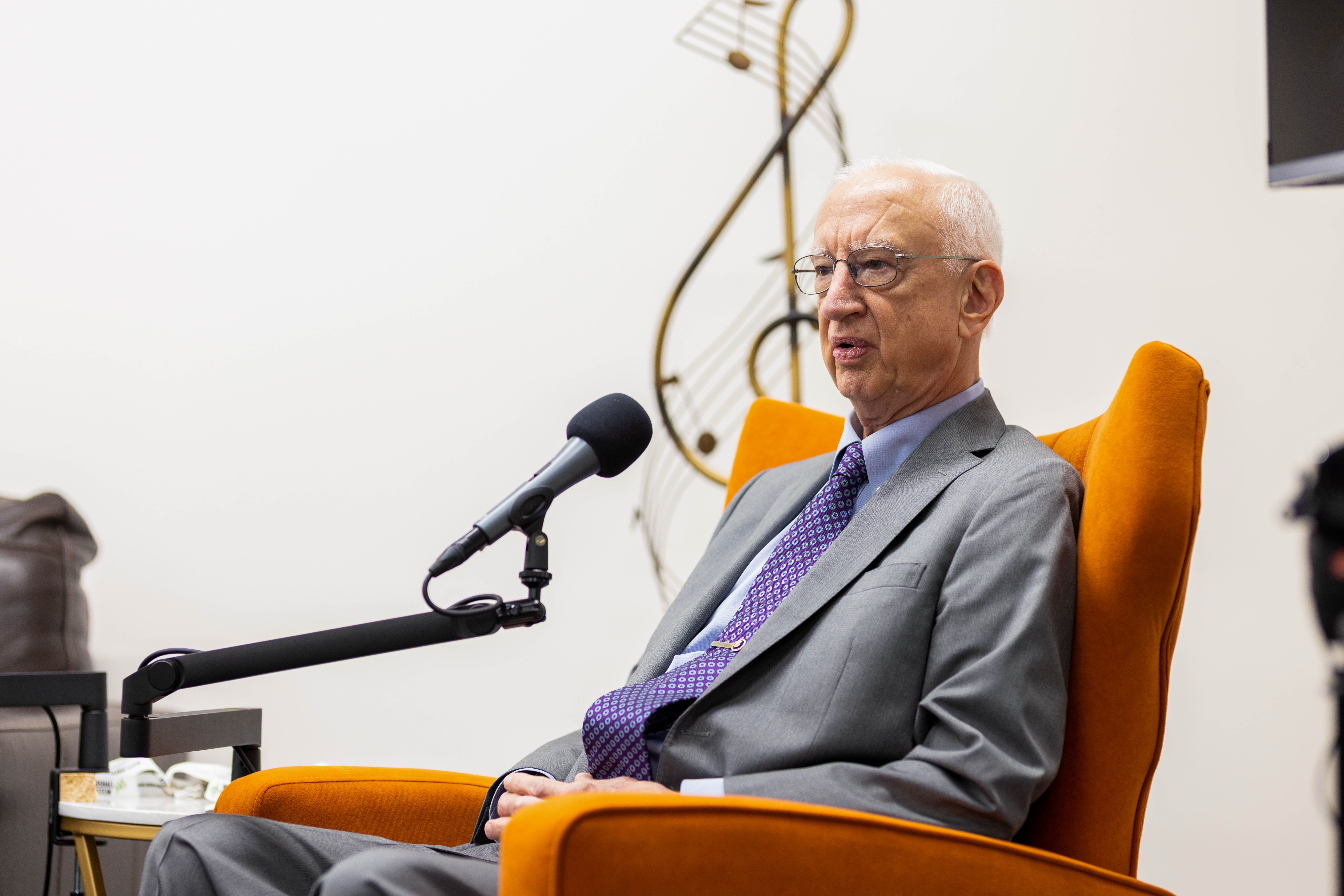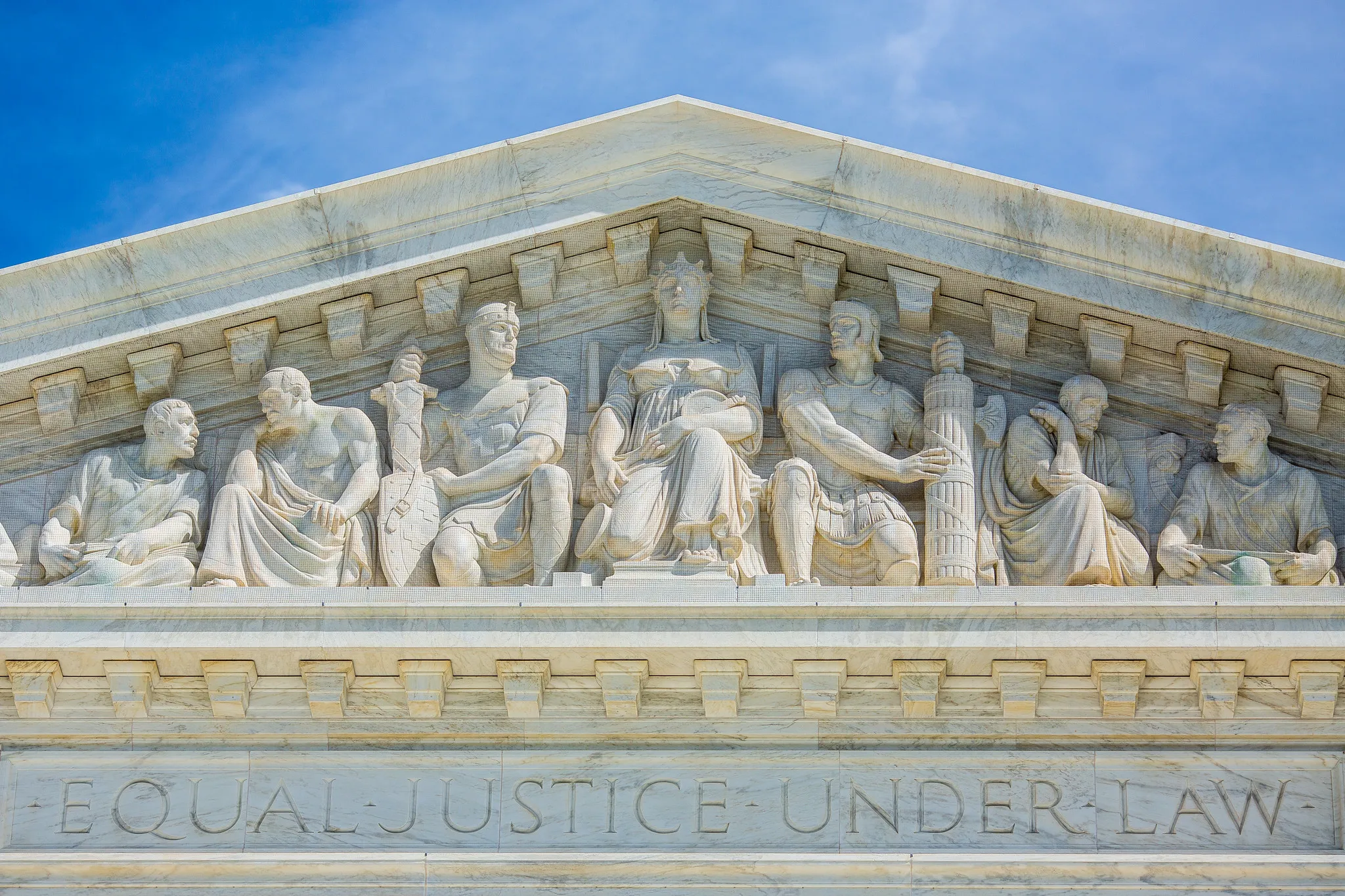Michel Puts Hope in ‘Imminent’ Patent Bills Following SCOTUS Eligibility Denials
“I think when the bills are introduced and get cosponsored by numerous people of both parties, and then they start holding hearings, that will create a huge amount of momentum, and when the courts see the momentum, they will start acting on their own – particularly the Federal Circuit.” – Judge Paul Michel
Judge Paul Michel speaking at IPWatchdog’s Patent Litigation Masters conference on Monday, May 15. Photo by Jessica Brown Photography.
On day one of IPWatchdog’s Patent Litigation Masters program yesterday, the U.S. Supreme Court denied two patent eligibility cases that the U.S. Solicitor General had recommended granting. The denials make it fairly clear that the High Court is not interested in helping to resolve the current problems with U.S. patent eligibility law, which generally have to do with a lack of clarity, arguably fostered by many of the Court’s own precedents.
Following the last panel of the day on Monday, in which speakers discussed ways to improve and streamline patent enforcement in America, retired U.S. Court of Appeals for the Federal Circuit Chief Judge Paul Michel told IPWatchdog he thinks the Supreme Court’s refusal to take up patent eligibility is self-serving. “I think the Court doesn’t want to admit they messed up the law in the four decisions – Bilski, Myriad, Mayo and Alice. They don’t even admit that it’s a big problem, but it is a huge problem, and everybody in the patent world knows it’s a huge problem,” Michel said.
Both on the panel and in his comments to IPWatchdog, Michel said that Congress is the only hope, and it may not be a lost cause this time. “It needs fixing urgently, so Congress has to step up and do it, and I think that’s actually going to happen quite soon.” In addition to a bill tackling eligibility law, Senators Thom Tillis (R-NC) and Chris Coons (D-DE) will also be introducing legislation fix the problems with the Patent Trial and Appeal Board (PTAB) and the issue of scarce injunctions for patent infringement, he said.
While quick passage is unlikely, Michel said the mere introduction of legislation could build momentum. He explained: “The three biggest problems are all about to be the subject of bipartisan bills in the Senate, and the House will follow suit. I think when the bills are introduced and get cosponsored by numerous people of both parties, and then they start holding hearings, that will create a huge amount of momentum, and when the courts see the momentum, they will start acting on their own – particularly the Federal Circuit.”
In the meantime, however, many lamented the Court’s choice yesterday not to deal with the eligibility issue now. Below are some comments from IP stakeholders, including Michel, on what the denials mean for the U.S. patent system, and eligibility law going forward.
Jeremy Anapol
“The Supreme Court’s decisions denying certiorari in these two cases continue the trend of turning away cases that ask the Court to clarify the Section 101 analysis but provide no concrete proposal for how to do so. The questions presented in these cases show that the petitioners did not give the Supreme Court the tools it would need to bring more clarity to this area of the law.
The question presented in Tropp was focused on whether the specific patent claims at issue in that case were patent eligible. This is not the type of recurring legal question that the Court often looks for, and not the type of question whose answer is likely to add much clarity to the broader body of law. At the opposite extreme, the questions presented in Interactive Wearables were so broad that they would apply to essentially every Section 101 case. For example, the first question in the Interactive Wearables petition asked, “What is the appropriate standard…?” This question does not invite any specific, straightforward answer that could plausibly provide the clarity that lower courts and litigants have been seeking.
The Supreme Court may be more willing to answer the call for clarity in the Section 101 analysis if a future petitioner manages to present a question that shows the justices a clear path forward.”
Dina Blikshteyn
“The Supreme Court’s decision not to hear Tropp and Interactive Wearables means the courts will proceed as before: decide patent eligibility on a case-by-case basis, using a highly subjective patent eligibility test that lacks uniformity and certainty. Although the decision not to hear Tropp was expected, the decision not to hear Interactive Wearables was surprising. Unlike Tropp, the claims in Interactive Wearables appeared to be directed to an improved wearable content – a technological improvement. Using Interactive Wearables as a guide, I do not expect the Court’s decision on hearing Avery Dennison v. ADASA to be any different.
Patent eligibility is further complicated because the USPTO and the courts do not even apply the same patent eligibility test. The USPTO splits Step 2A into Prong One (whether the claims recite a judicial exception) and Prong Two (whether the judicial exception is tied to a practical application). The courts, however, are not required to perform the analysis in Prong Two. This means that patents that have recently overcome the patent eligibility hurdle and were issued by the USPTO may still be found to be patent ineligible by the courts, causing even more frustration for patent owners and practitioners alike. Perhaps it’s best to look to Congress for guidance on what is patent eligible and what is not.”
Hon. Paul R. Michel
“It’s been clear for a long time, and the recent denials make it still clearer than before, that the Supreme Court has no interest in fixing the eligibility problem. The eligibility problem, in my view, is the single biggest problem in the entire patent system because it’s created chaos, total unpredictability, inconsistent results, and has caused many patents to be wrongly invalidated. So, it’s obvious the Supreme Court won’t fix it, and therefore the Congress has to fix it. Fortunately, Senators Tillis and Coons have framed an extremely good eligibility reform bill. It’s imminently going to be introduced in the Congress, it’s bipartisan, supported by liberals and conservatives, “R”s and “D”s, and it has a lot of merits. It’s been very carefully worked out. I’ve seen the near final draft and I personally think it’s an extremely good, realistic fix for this overwhelming problem.”
Will Milliken
“That the Supreme Court has now asked for the government’s views in five separate § 101 cases in recent years suggests that the Justices are interested in addressing subject-matter eligibility. That they have rejected multiple grant recommendations from the government, however, suggests that the Justices have not yet found a case they view as a suitable vehicle for doing so. Avery Dennison differs from the other cases that the government has recommended the Court take in that the petitioner in Avery Dennison is arguing that the Federal Circuit is applying § 101 too narrowly, instead of too broadly. If the Justices are inclined to that viewpoint—as opposed to the more patentee-friendly viewpoint set forth in the other recent high-profile § 101 petitions—then perhaps Avery Dennison has a chance at a grant. We will know more after the Court’s May 25 conference, when it is set to consider the petition.”
Wendy Verlander
“I think it doesn’t bode well for any future Supreme Court accepting cert for patent eligibility. They’ve denied it so many times that now I’m just hoping Congress does something. I’m heartened by what Judge Michel said [about soon-to-be-introduced legislation on eligibility]. Normally I wouldn’t hold out much hope for a Congressional solution, but after what Judge Michel said, I do feel more encouraged.”





